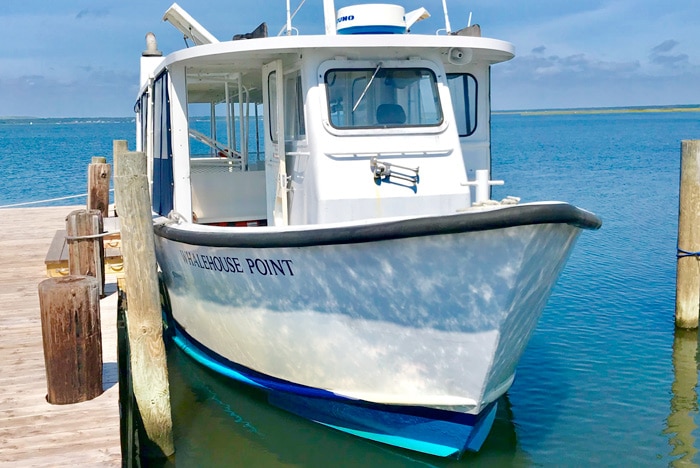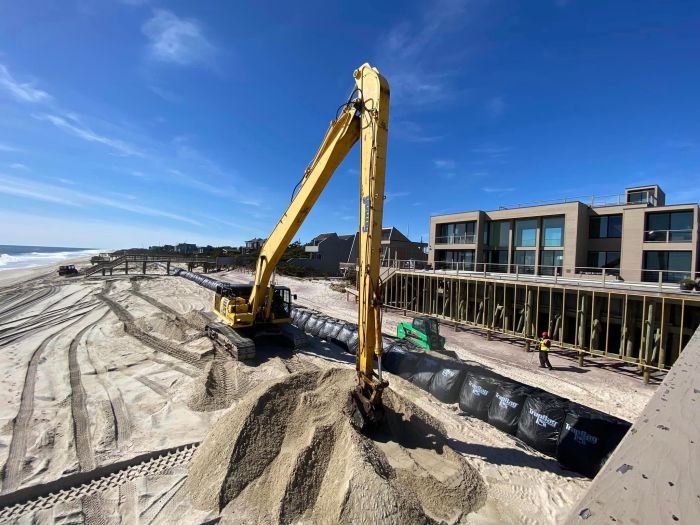
In the two years since about 20 oceanfront homeowners lost their property to government bureaucracy, preceding bulldozers building new dunes on half of Fire Island, those homes sit vacant and largely dune-free.
The properties, mostly in Ocean Bay Park and Davis Park, were either bought out or condemned to make way for what will be the last phase of the $207 million federally funded Fire Island Inlet to Moriches Inlet (FIMI) project that is rebuilding about 19 miles of dunes and beach berms along the south side of the 32-mile barrier island to repair damage done by Superstorm Sandy. The unintended consequence of the red tape in such sensitive legal proceedings is that the owners were forced to leave their homes well before the work actually began. As a result, the former residents could have enjoyed their homes for the last two summers instead of packing up and moving out years ago as they did.
“I could be there right now,” Chris Gurl, formerly of Ocean Bay Park, recently told Newsday. “I was hoping you were calling to say they were going to give me back my house . . . it’s a shame, absolutely.”
FIMI was spun off from the $1 billion Fire Island Inlet to Montauk Point (FIMP) storm mitigation project that is expected to follow later. But while Sandy washed away a dozen FI homes when it rolled ashore Oct. 28, 2012, FIMI will have claimed nearly twice as many by the time the work is done. Besides the 20 targeted, an oceanfront home in Saltaire and another in Robbins Rest were previously torn down to make way for a section of FIMI dune already completed to the west.
As the sixth anniversary of Sandy nears, some communities remain vulnerable to storm surge, since the dunes remain flattened in areas where rebuilding is incomplete as the 2018 Atlantic Hurricane Season peaks.
Government distrust runs deep in these parts following the condemnations. Francine Haselkorn of Ocean Bay Park has said she suspects an ulterior motive is afoot. “This is a well-planned attempt at a land grab by the [U.S.] Department of Interior,” she said in 2015 during a public hearing on FIMI, referring to the Fire Island National Seashore’s parent agency. “The plan is described as restoration when it is in fact retreat into private property.”
The demolition work is officially known as Contract 3B1, which the U.S. Army Corps of Engineers overseeing the FIMI project awarded to Brownie Companies of Long Island in late spring, with the project gearing up, and may even begin before Labor Day. Contract 3B2, which entails placing the sand on the beach, is expected to begin after Labor Day. And contract 3B3, which involves relocating a handful of homes in Davis Park, will follow after that, although a couple a homeowners already commenced work privately before federal contractors arrived.
The Ocean Bay Park Erosion Control District, signaling it expects more delays, spent $92,000 in July to replace hundreds of feet of tattered trap bags — those temporary makeshift dunes seen across FI after Sandy. Call it an insurance policy, just in case a storm hits before the dune is finished. But the sight of abandoned homes in prime oceanfront real estate is unsettling.
“I think we all got so used to seeing the sad, unoccupied and boarded up houses that we convinced ourselves that this was the new normal and they really were not being taken down,” Barbara Gaby Placilla, the News’ Ocean Bay Park columnist, wrote last month. “That all changed on Wednesday, June 27, with the arrival of the two construction trailers … The demolition of the houses will … change the look of Ocean Bay Park as the first line of houses north of Traffic Avenue will now be oceanfront.”
Jared Della Valle, an Ocean Bay Park homeowner and New York City-based developer whose family had two homes on Traffic Avenue, previously told the News that he predicts the entire unpaved sandy street, which runs right behind the dune, will be history once the bulldozers arrive to build the new dune.
He too wishes he had more time in his home. “As a homeowner, it’s very frustrating,” he has said. “It’s Fire Island, the time here is sacred.”






























